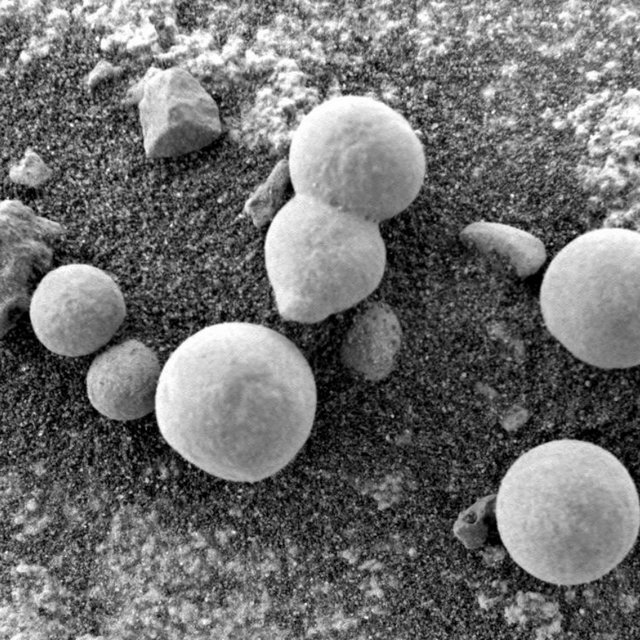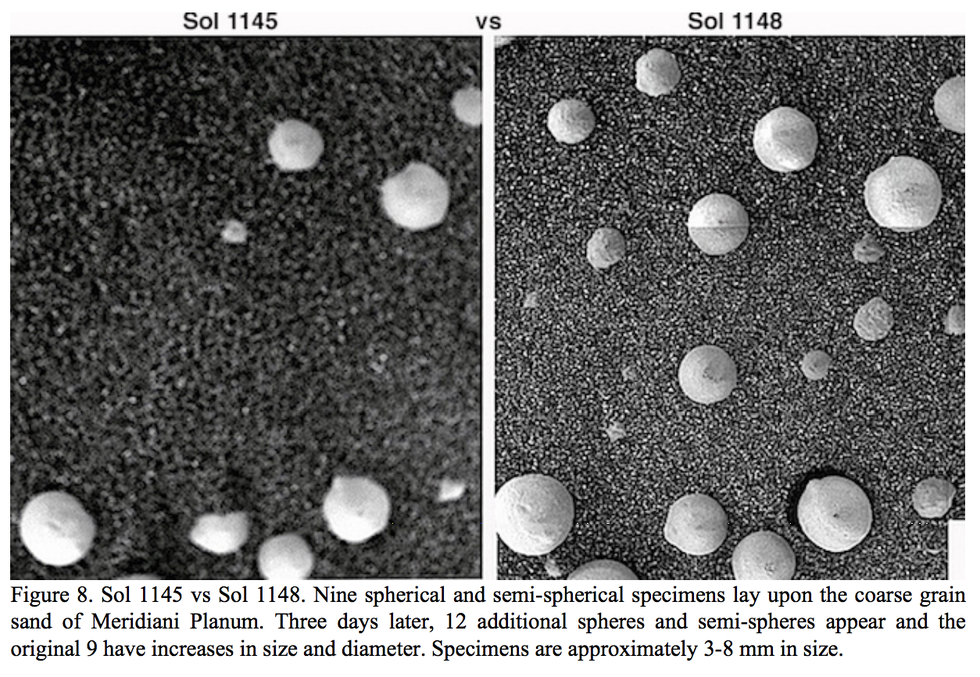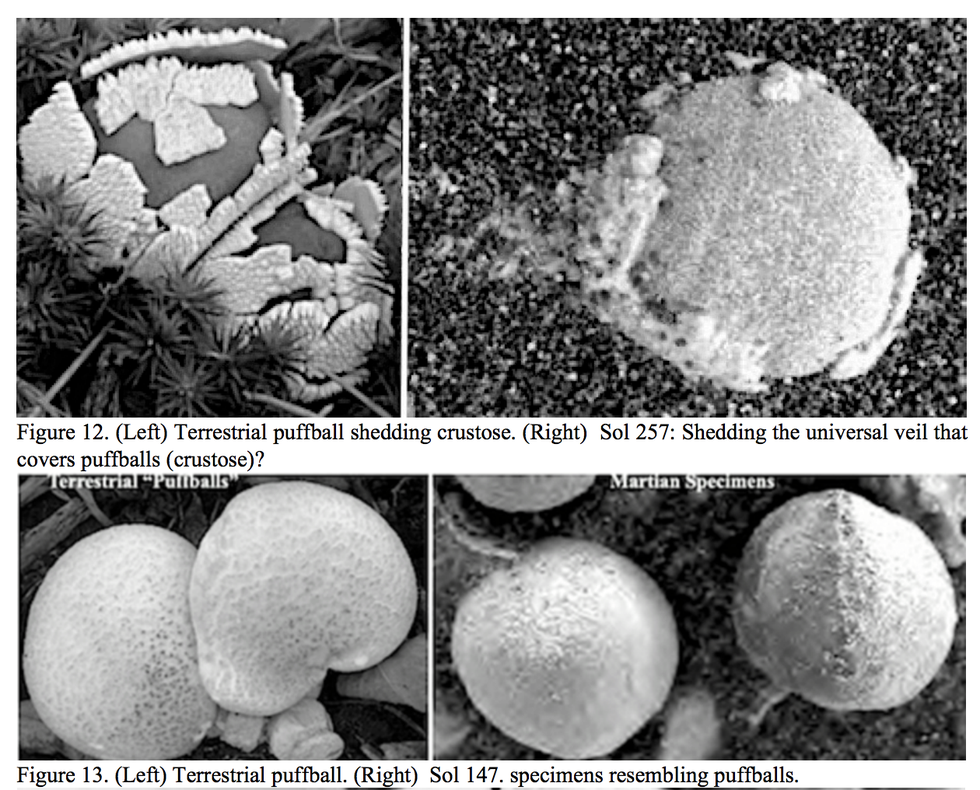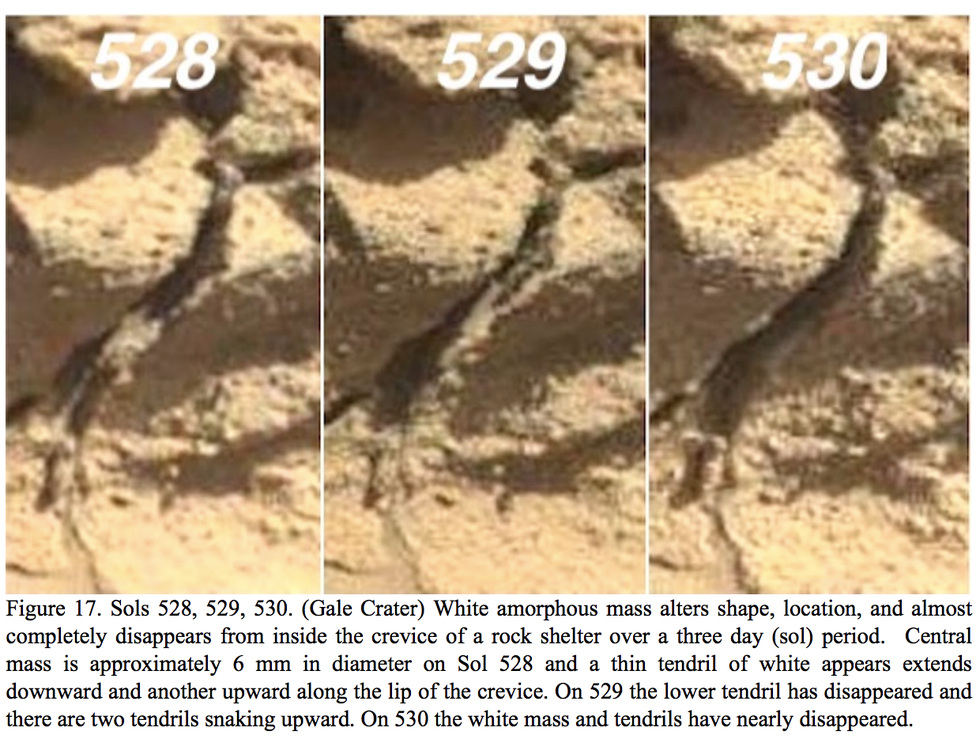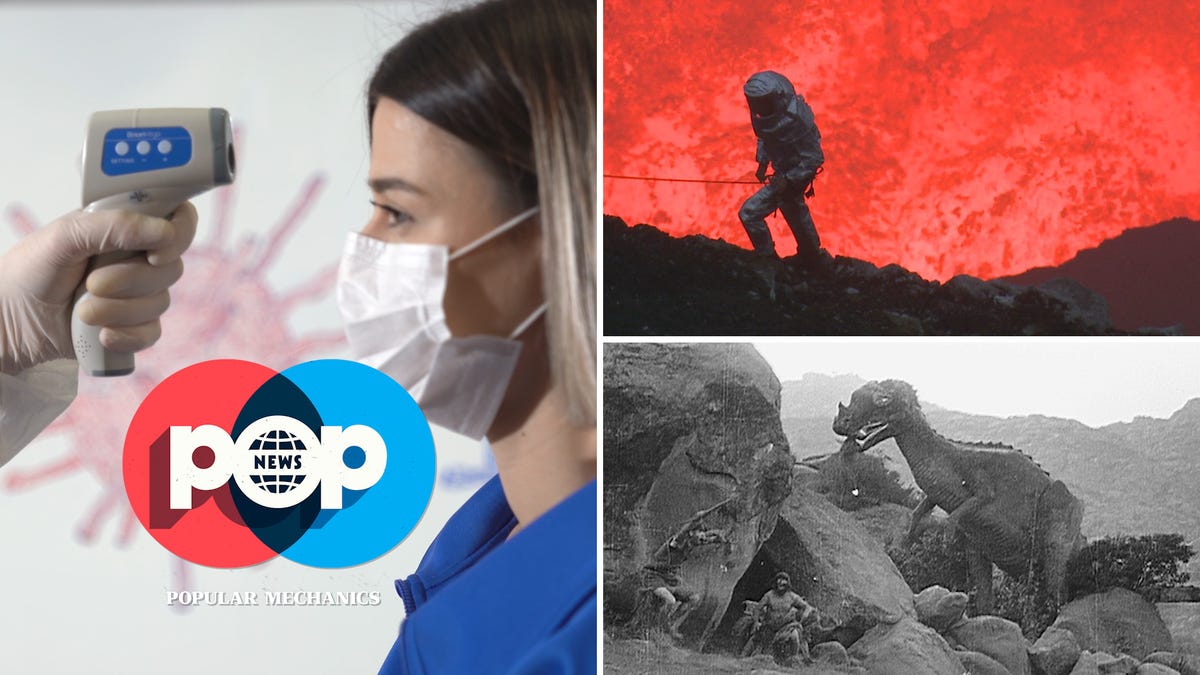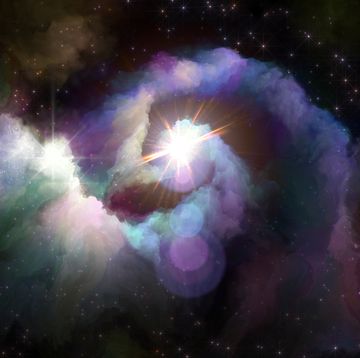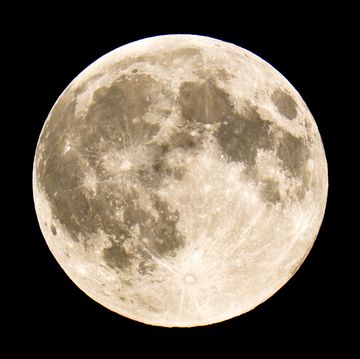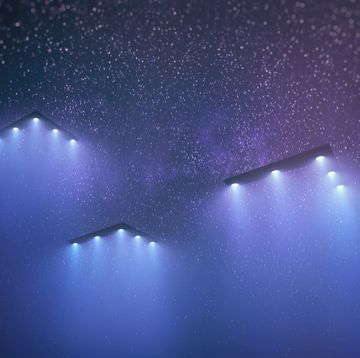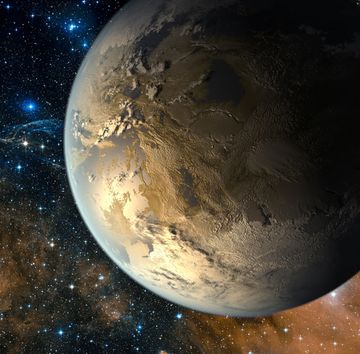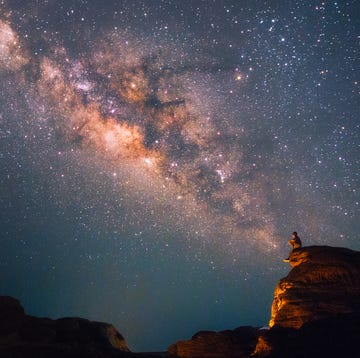- Some scientists claim NASA photos show mushrooms growing on Mars.
- In their paper, the scientists analyze a variety of images taken by NASA’s Opportunity and Curiosity rovers, as well as the Mars Reconnaissance Orbiter’s HiRISE camera.
- Mushrooms could be great for multiple purposes for Mars settlers.
Could there be mushrooms on Mars? In a new paper, an international team of scientists from countries including the U.S., France, and China have gathered and compared photographic evidence they say shows fungus-like objects growing on the Red Planet. But other experts in the scientific community are skeptical of the claims.
In their paper, which appears in Scientific Research Publishing’s Advances in Microbiology, the scientists analyze images taken by NASA’s Opportunity and Curiosity rovers, plus the Mars Reconnaissance Orbiter’s HiRISE camera. The scientists say the objects in question show “chalky-white colored spherical shaped specimens,” which the Mars Opportunity team initially said was a mineral called hematite.
Later studies refuted the hematite claim. Soon, a scientist named Rhawn Gabriel Joseph—the lead author of the new paper—coined the term “Martian mushrooms” to describe the mysterious objects, because of how they resemble lichens and mushrooms. In another study, fungi and lichen experts classified the spheres as “puffballs”—a white, spherical fungus belonging to the phylum Basidiomycota found on Earth.
In the new paper, the scientists point to a set of Opportunity photos that shows nine spheres increasing in size, and an additional 12 spheres emerging from beneath the soil, over a 3-day sequence. The researchers claim Martian wind didn’t uncover the amorphous spheres, and that they “expand in size, or conversely, change shape, move to new locations, and/or wane in size and nearly disappear.”
The scientists continue:
“Many of these ground-level spherical specimens also have stalks or have shed portions of their outer membranes—possibly crustose—and are surrounded by white chunks and fluffy spore-like material that may consist of leprose.”
Crustose and leprose are kinds of fungus surface textures, where crust or scales form and can flake away.
The presence of these peripheral parts is important, the scientists say, because it helps them make the case that what we’re seeing really is fungus instead of simply some spherical rocks. (There is no proof the objects are fungi.) Mushrooms grow and reproduce like gangbusters—it’s one of the defining characteristics of the entire family of fungi. Small mushrooms grow in about a day, while large mushrooms take up to 4 days.
In their research, the scientists lay out all the ways their proposed fungi change from one photo to the next. “White amorphous mass alters shape, location, and almost completely disappears from inside the crevice of a rock shelter over a three day (Sol) period,” they explain of one image set, shown below.
Besides something like a gust of wind blowing away loose sand, fungi are one of the only living things that could experience such noticeable growth and change in just a few days.
The scientists acknowledge the “evidence” they present isn’t close to ironclad, and seem to predict the scrutiny that will inevitably come with their paper, writing that “similarities in morphology are not proof of life.”
“It is possible that all the specimens presented here are abiotic. We cannot completely rule out minerals, weathering, and unknown geological forces that are unique to Mars and unknown and alien to Earth. However, growth, movement, alterations in location and shape, constitute behavior, and coupled with life-like morphology, strongly support the hypothesis there is life on Mars.”
Indeed, the paper has already drawn criticism. In an article published last week, CNet’s Jackson Ryan pointed out that Joseph, a self-proclaimed neuroscientist “who made major contributions to the field of neuroplasticity in the 1970s,” has published “claims about life on other planets on his website and in pseudo-scientific journals he oversees” for over a decade.
While Joseph did publish a peer-reviewed paper in the journal Astrophysics & Space Science that also purported to find mushrooms on Mars in 2019, the journal retracted Joseph’s article after Ryan questioned the claims. Joseph’s article “proffers insufficient critical assessment of the material presented and literature cited, and fails to provide a solid underpinning for the speculative statements made in the article which, in their view, invalidates the conclusions drawn,” the journal’s authors later wrote.
Advances in Microbiology, in which Joseph and his colleagues’ latest paper appears, is published by the China-based Scientific Research Publishing, an organization that Ryan notes “has previously been caught out for republishing scientific articles” and “has been accused of being a predatory publisher, charging scientists fees to be published in its journals without checking the quality of the submitted papers.”
The editors of Advances in Microbiology didn’t respond to Ryan’s requests for comment. But other scientists, who weren’t involved in the research, expressed serious skepticism about the findings in the new paper. From CNet:
“Claiming that mushrooms are sprouting all over Mars is an extraordinary claim that requires better evidence than an analysis of photographic morphology by a known crank who has claimed, on the basis of the same kind of analysis, that he has seen fields of skulls on Mars,” says Paul Myers, a developmental biologist at the University of Minnesota, Morris, who has followed Joseph’s work in the past.
We’ll continue to monitor the developments surrounding this research in light of the criticism.
In the meantime, however, let’s say scientists really do find mushrooms on Mars one day. What would that mean in a future where humans hope to settle on the Red Planet?
Well, many fungi on Earth are also extremophiles—meaning organisms that can thrive in conditions considered “extreme” in terms of the usual building blocks of life. So to find mushrooms on Mars is perhaps less surprising than we think.
In his 2018 novel Red Moon, Kim Stanley Robinson imagined a moon settlement with fast-growing bamboo as its primary building material. It’s not hard to imagine fungus used as anything from a building material, to an insulator, to even a hypothetical food source for Mars residents or their livestock animals.
Note: We have updated this article to reflect the criticism that surfaced after the new research, and our coverage, first appeared.

Caroline Delbert is a writer, avid reader, and contributing editor at Pop Mech. She's also an enthusiast of just about everything. Her favorite topics include nuclear energy, cosmology, math of everyday things, and the philosophy of it all.
